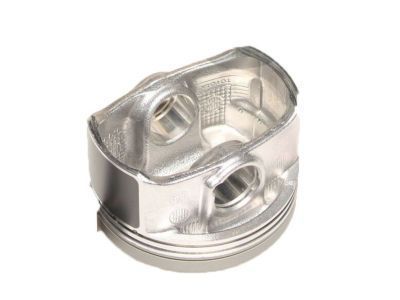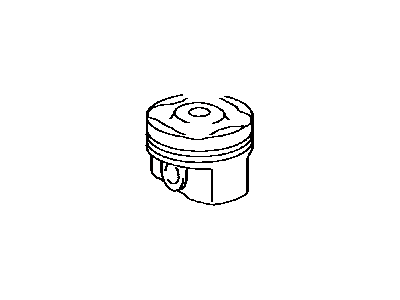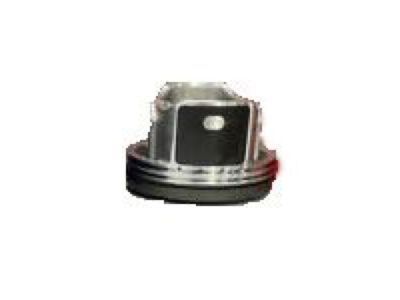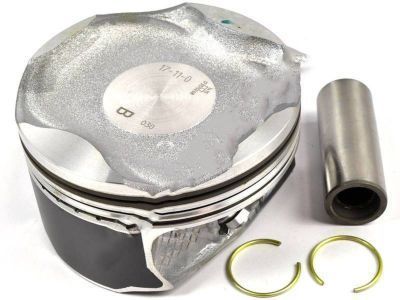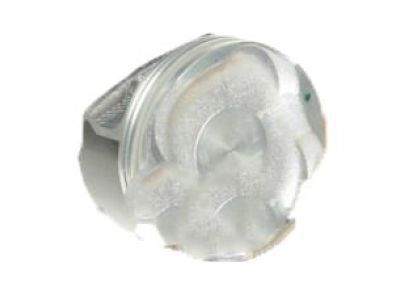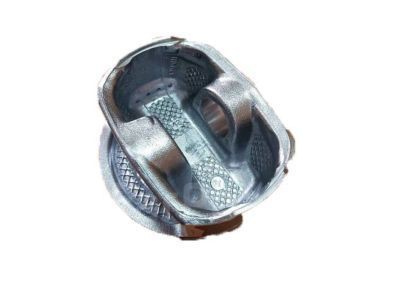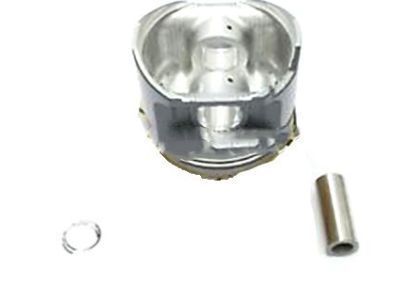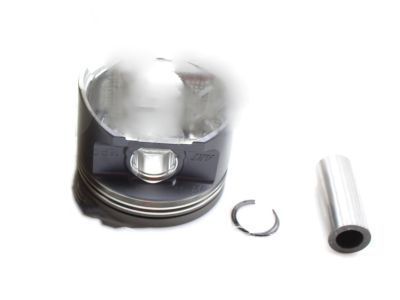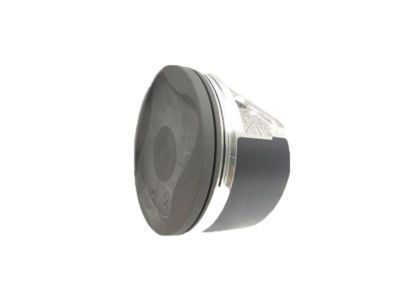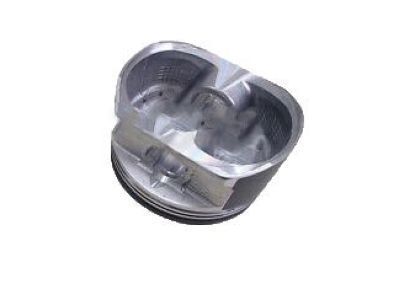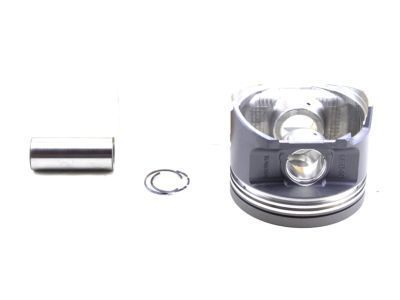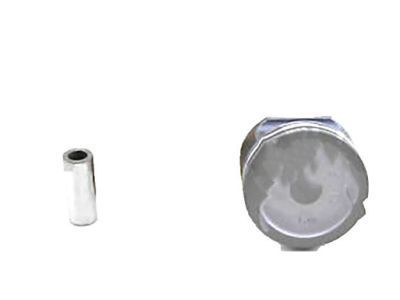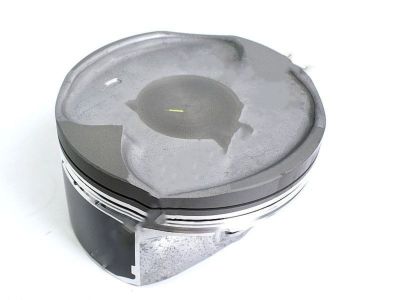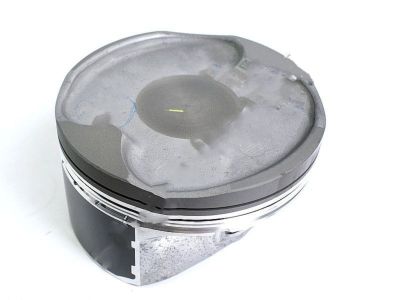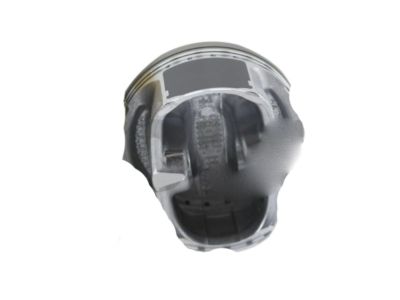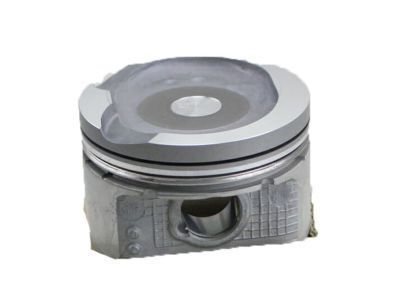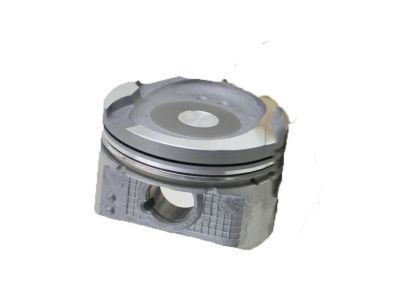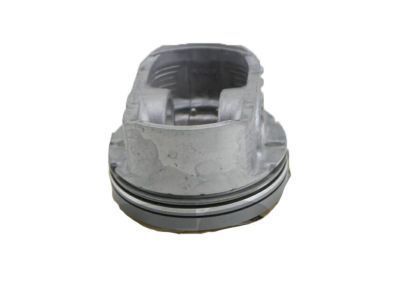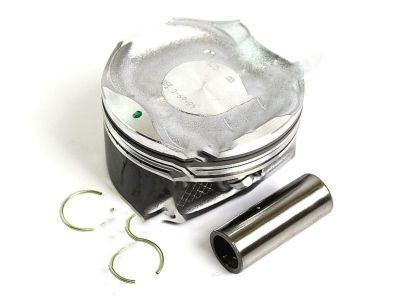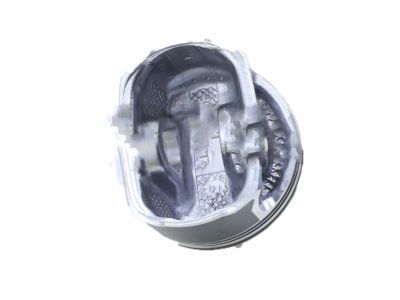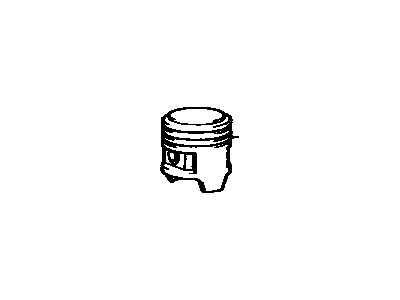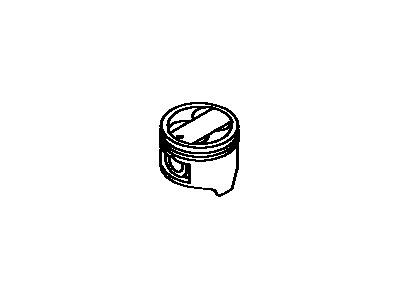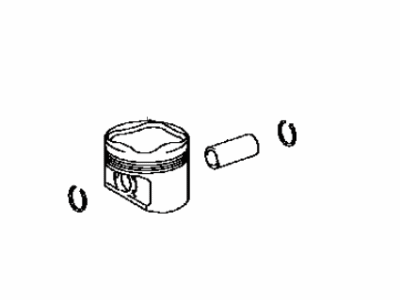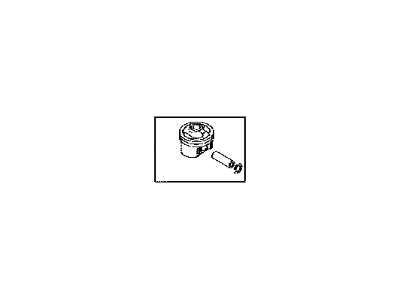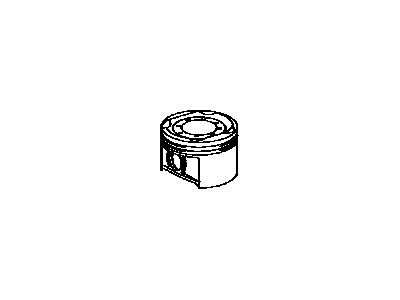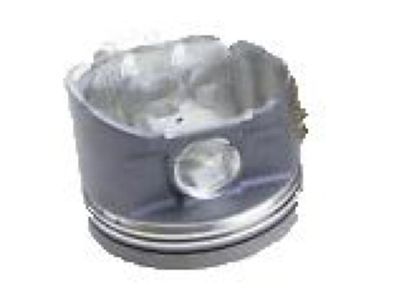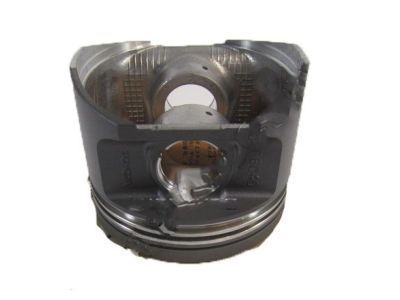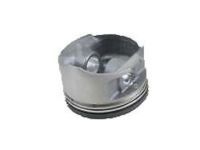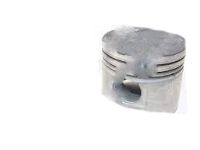

My Garage
My Account
Cart
Genuine Toyota Piston
Engine Pistons- Select Vehicle by Model
- Select Vehicle by VIN
Select Vehicle by Model
orMake
Model
Year
Select Vehicle by VIN
For the most accurate results, select vehicle by your VIN (Vehicle Identification Number).
678 Pistons found
Toyota Piston Sub-Assembly with Pin
Part Number: 13101-37120$86.36 MSRP: $121.74You Save: $35.38 (30%)Ships in 1-3 Business DaysProduct Specifications- Other Name: Piston Sub-Assy, W/Pin; Piston
- Manufacturer Note: STD
Toyota Piston Sub-Assembly with Pin
Part Number: 13101-37240$77.87 MSRP: $109.77You Save: $31.90 (30%)Ships in 1-3 Business DaysProduct Specifications- Other Name: Piston Sub-Assy, W/Pin; Piston
- Manufacturer Note: STD
Toyota Piston Sub-Assembly with Pin
Part Number: 13101-0S030$84.48 MSRP: $119.08You Save: $34.60 (30%)Ships in 1-3 Business DaysProduct Specifications- Other Name: Piston Sub-Assy, W/Pin; Piston
- Manufacturer Note: STD
Toyota Piston Sub-Assembly with Pin
Part Number: 13103-66040$143.31 MSRP: $203.75You Save: $60.44 (30%)Ships in 1-2 Business DaysProduct Specifications- Other Name: Piston Sub-Assy, W/Pin
- Manufacturer Note: O/S 0.50
Toyota Piston Sub-Assembly with Pin
Part Number: 13101-31030-A0$96.51 MSRP: $136.05You Save: $39.54 (30%)Ships in 1-2 Business DaysProduct Specifications- Other Name: Piston Sub-Assy, W/Pin; Piston
- Manufacturer Note: STD,MARK A,REFER REPAIR MANUAL
Toyota Piston Sub-Assembly with Pin
Part Number: 13105-66040$143.31 MSRP: $203.75You Save: $60.44 (30%)Ships in 1-3 Business DaysProduct Specifications- Other Name: Piston Sub-Assy, W/Pin
- Manufacturer Note: O/S 1.00
Toyota Piston Sub-Assembly with Pin
Part Number: 13101-31120-B0$93.68 MSRP: $132.06You Save: $38.38 (30%)Ships in 1-3 Business DaysProduct Specifications- Other Name: Piston Sub-Assy, W/Pin; Piston
- Manufacturer Note: STD,MARK B,REFER REPAIR MANUAL
Toyota Piston Sub-Assembly with Pin
Part Number: 13101-22032$103.36 MSRP: $145.70You Save: $42.34 (30%)Ships in 1-3 Business DaysProduct Specifications- Other Name: Piston Sub-Assy, W/Pin; Piston
- Manufacturer Note: STD
- Replaces: 13101-22031, 13101-22030
Toyota Piston Sub-Assembly with Pin
Part Number: 13101-0S011$101.59 MSRP: $143.20You Save: $41.61 (30%)Ships in 1-3 Business DaysProduct Specifications- Other Name: Piston Sub-Assy, W/Pin; Piston
- Replaces: 13101-0S010
Toyota Piston Sub-Assembly with Pin
Part Number: 13101-0P040$105.01 MSRP: $148.03You Save: $43.02 (30%)Ships in 1-3 Business DaysProduct Specifications- Other Name: Piston Sub-Assy, W/Pin; Piston
- Position: Passenger Side
- Replaces: 13211-0P040-A0, 13211-0P040-B0, 13211-0P040-C0
Toyota Piston Sub-Assembly with Pin
Part Number: 13101-61011$109.61 MSRP: $154.51You Save: $44.90 (30%)Ships in 1-3 Business DaysProduct Specifications- Other Name: Piston Sub-Assy, W/Pin
- Manufacturer Note: STD,STD
Toyota Piston Sub-Assembly with Pin
Part Number: 13103-16121$113.50 MSRP: $160.00You Save: $46.50 (30%)Ships in 1-3 Business DaysProduct Specifications- Other Name: Piston Sub-Assy, W/Pin
- Manufacturer Note: O/S 0.50
- Replaces: 13103-16120
Toyota Piston Sub-Assembly with Pin
Part Number: 13301-0P030$92.26 MSRP: $130.05You Save: $37.79 (30%)Ships in 1-3 Business DaysProduct Specifications- Other Name: Piston Sub-Assy, W/Pin, LH; Piston
- Position: Driver Side
- Replaces: 13221-0P030-A0, 13221-0P030-B0
Toyota Piston Sub-Assembly with Pin
Part Number: 13101-31030-B0$96.51 MSRP: $136.05You Save: $39.54 (30%)Ships in 1-3 Business DaysProduct Specifications- Other Name: Piston Sub-Assy, W/Pin
- Manufacturer Note: STD,MARK B,REFER REPAIR MANUAL
- Replaces: 13101-31030
Toyota Piston Sub-Assembly with Pin
Part Number: 13101-31120-A0$95.80 MSRP: $135.05You Save: $39.25 (30%)Ships in 1-3 Business DaysProduct Specifications- Other Name: Piston Sub-Assy, W/Pin; Piston
- Manufacturer Note: STD,MARK A,REFER REPAIR MANUAL
Toyota Piston Sub-Assembly with Pin
Part Number: 13101-WB001$90.18 MSRP: $127.12You Save: $36.94 (30%)Ships in 1-3 Business DaysProduct Specifications- Other Name: Piston Sub-Assy, W/Pin; Piston
- Manufacturer Note: STD
Toyota Piston
Part Number: 13211-28121-A0$104.54 MSRP: $147.36You Save: $42.82 (30%)Ships in 1-3 Business DaysProduct Specifications- Manufacturer Note: MARK A,REFER REPAIR MANUAL
- Replaces: 13211-28120-A0
Toyota Piston Sub-Assembly with Pin
Part Number: 13101-88381-01$115.51 MSRP: $162.82You Save: $47.31 (30%)Ships in 1-3 Business DaysProduct Specifications- Other Name: Piston Sub-Assy, W/Pin; Piston
- Manufacturer Note: STD,MARK 1
Toyota Piston Sub-Assembly with Pin
Part Number: 13101-0T010$81.24 MSRP: $114.53You Save: $33.29 (30%)Ships in 1-3 Business DaysProduct Specifications- Other Name: Piston Sub-Assy, W/Pin; Piston
- Replaces: 13101-37071
Toyota Piston Sub-Assembly with Pin
Part Number: 13101-66040-02$143.31 MSRP: $203.75You Save: $60.44 (30%)Product Specifications- Other Name: Piston Sub-Assy, W/Pin; Piston
- Manufacturer Note: STD,MARK 2,REFER REPAIR MANUAL
| Page 1 of 34 |Next >
1-20 of 678 Results
Toyota Piston Parts Questions & Experts Answers
- Q: How to install piston/connecting rod assemblies on 1996 through 2002 Toyota 4Runner?A:Before installing the piston and connecting rod assemblies, ensure the cylinder walls are clean, the top edge of each cylinder is chamfered, and the crankshaft is in place. Remove the cap from the number one connecting rod, take out the original bearing inserts, and wipe the bearing surfaces with a clean, lint-free cloth. Clean the back side of the new upper bearing insert and lay it in place in the connecting rod, ensuring the tab fits into the recess and the oil holes align without hammering or lubricating the bearing. Repeat this for the other bearing insert in the rod cap, maintaining cleanliness. Stagger the piston ring gaps around the piston, slip a section of hose over each connecting rod cap bolt, lubricate the piston and rings with clean engine oil, and attach a piston ring compressor, leaving the skirt protruding to guide the piston into the cylinder. Rotate the crankshaft to bring the number one connecting rod journal to bottom dead center and apply engine oil to the cylinder wall. With the piston mark facing the front of the engine, gently insert the piston/connecting rod assembly into the cylinder bore, ensuring the ring compressor contacts the block. Tap the top edge of the ring compressor and gently tap the piston with a wooden hammer handle while guiding the connecting rod onto the crankshaft journal, avoiding any force that could break a ring or the piston. After installation, check the connecting rod bearing oil clearance before permanently bolting the rod cap in place by laying a piece of Plastigage on the connecting rod journal and installing the cap, ensuring the mating marks align. Tighten the nuts to the specified torque in three steps, then remove the cap to measure the crushed Plastigage against the scale to determine oil clearance. If the clearance is incorrect, check for dirt or oil between the bearing inserts and the connecting rod or cap, and recheck the journal diameter. Carefully scrape off any Plastigage material, apply a uniform layer of moly-base grease or engine assembly lube to the bearing faces, and reinstall the connecting rod and cap, tightening the nuts to the specified torque. Repeat this process for the remaining pistons and connecting rods, keeping the bearing inserts and connecting rods clean, ensuring the correct piston/rod assembly for each cylinder, and lubricating the cylinder walls and bearing faces. After all assemblies are installed, rotate the crankshaft by hand to check for binding, and finally, check the connecting rod endplay, comparing the measurement to ensure it is correct; if new rods or a crankshaft were installed, resizing may be necessary if the endplay is inadequate.
- Q: How to inspect piston/connecting rod assemblies on 1997 through 2001 Toyota Avalon?A:Before inspection, clean the piston/connecting rod assemblies and remove the original piston rings using a piston ring installation tool. Remove carbon from the piston top with a wire brush or fine emery cloth and use a groove-cleaning tool to remove carbon deposits from the ring grooves. Clean the assemblies with solvent and dry with compressed air. If the pistons and cylinder walls are undamaged, new pistons may not be necessary, but always use new piston rings when rebuilding an engine. Inspect each piston for cracks, scoring, holes, and burned areas. Measure the piston ring groove clearance and the piston-to-bore clearance. Check the piston-to-rod clearance for wear. If pistons must be removed, have the rods checked for bend and twist. Inspect the connecting rods for damage, inspect the rod and cap bearing surfaces, and replace old bearings if necessary.
- Q: What are the steps involved in inspecting and preparing piston/connecting rod assemblies before reassembly on 1995 through 2004 Toyota Tacoma?A:It should be noted that before proceeding to inspect the piston/connecting rod assemblies, the assemblies need to be washed, and before using the pistons, the original piston rings are replaced by new ones. Pick the rings out with a piston ring installation tool, without scratching them or damaging the sides of the pistons in any way. Position the block upside down on the bench and allow all the deposits to fall into the sump before scraping the top of the piston clean using a hand-held wire brush or fine emery cloth with the caution of not using a wire brush that is mounted in to a drill motor because it erodes the soft piston material. Any carbon buildup in the piston ring groove should be wiped using a piston ring groove-cleaning tool or even a piece broken off the old set of rings but make sure not to take with it the groove metal. Once the deposits have been extracted,/components cleaned with solvent and dried with compressed air the piston/rod assemblies needed to be thoroughly checked that the oil return holes and the oil hole in the lower end of each rod are free from obstruction. Were the pistons and cylinder walls in good condition and not excessively worn and if you haven't rebored the engine block you may not need new pistons, however new piston rings should always be installed when doing a rebuild. Every piston must be scrutinize for cracks, scoring, scuffing, holes, burned areas because they may show that the engine has overheated, or combusted in abnormal manner or spark knock; therefore, the cooling and lubrication systems must be checked. Small pitting corrosion indicates that there is leakage of the coolant into the combustion chamber or crankcase and this has to be fixed to avoid such a scenario. Have clearance of the piston ring grooves checked using a new piston ring and a feeler gauge at several positions of the groove; use the right ring for the groove. Measure the cylinder bore using the micrometer and do the same with the piston, then compare and calculate the difference between the two sizes that will give you the piston to bore clearance. If the clearance is above the given specifications, it means that the block needs to be rebored, and new pistons and rings ought to be fitted. Check the amount of end float on the piston to rod; if the amount of play is large; end float adjustments are necessary. If pistons have to be pulled out from the connecting rods, carry the rods to an automotive machine shop for checking for bend and twist. Lastly, flat a small amount of the bearing material on each connecting rod so as to observe whether the location matches with the rod cap; one can remove and clean the bearing surfaces, check for nicks, gouges, and scratches, put on new bearings, and tighten the caps with fingers only, new rods must be fitted if the engine is being reborn due to connecting rod knock.
Related Toyota Parts
Browse by Model
4Runner Piston 86 Piston Avalon Piston C-HR Piston Camry Piston Celica Piston Corolla Cross Piston Corolla Piston Corolla iM Piston Corona Piston Cressida Piston Crown Piston Echo Piston FJ Cruiser Piston GR Corolla Piston GR Supra Piston GR86 Piston Grand Highlander Piston Highlander Piston Land Cruiser Piston MR2 Piston MR2 Spyder Piston Matrix Piston Paseo Piston Pickup Piston Previa Piston Prius AWD-e Piston Prius C Piston Prius Piston Prius Prime Piston Prius V Piston RAV4 Piston RAV4 Prime Piston Sequoia Piston Sienna Piston Solara Piston Starlet Piston Supra Piston T100 Piston Tacoma Piston Tercel Piston Tundra Piston Van Piston Venza Piston Yaris Piston Yaris iA Piston

